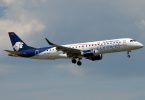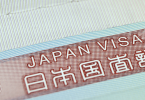MIAMI — The big grins on the faces of cruise industry executives this week at the Cruise Shipping Miami conference said it all.
Cruising is a profitable business, and its popularity continues to rise. Cruising generates $40 billion in annual revenue in the United States, and in Europe, a rapidly growing market, another $32 billion annually, according to the Cruise Lines International Association, the industry’s largest trade group.
In down economies and boom times, the cruise industry has experienced an average of 7 percent annual growth in passengers since 1980.
At Port Canaveral, home to ships from Royal Caribbean, Disney Cruise Line and Carnival Cruise Lines, the recent numbers are strong, as well.
Port Canaveral’s cruise revenue is up 43.8 percent compared with the same period a year ago, according to the Canaveral Port Authority. Year-to-date cruise passenger counts were up 19.4 percent and multi-day cruise revenue was up 23.4 percent.
So what’s next for the industry? Raising prices.
Fueled by an optimistic outlook for 2010 and the belief that increased offerings onboard a growing fleet of mega-ships and the value of cruising justifies it, cruise lines will hike prices from 5 percent to 7 percent per ticket, CLIA said.
Not that the industry didn’t have its share of pitfalls in 2009, but that only served as the impetus for their optimism.
Now that 2009 and its challenges are fading fast, executives in the industry say it’s only the beginning to continued success, but American consumers will have to pay for it – with rising cruise prices.
The optimism for this year’s economic outlook and the increased amenities and value of cruising contributes to the price hike, which will go up by as much as 5 to 7 percent per ticket price, according to CLIA.
Karen Bense, owner of Air, Land & Sea Travel, Inc., in Cocoa Beach, said it could even go up as high as $10 per cruise day.
“It will be kind of like the airlines. One will do it, and they all will do it,” said Karen Bense, owner of Air, Land & Sea Travel, Inc. in Cocoa Beach, who estimates the increase could translate to $10 per cruise day or more.”Then all of a sudden, someone will drop prices, and they all will follow. We look at it all day long, and there’s not a huge difference between the major cruise lines.”
A long way from ‘Love Boat’
There’s no denying the cruise industry has come a long way.
As presented on the popular television show “The Love Boat,” which had a 10-year run beginning in 1977, the most exciting onboard amenities were shuffleboard courts, a discotheque and a 300-square-foot gym.
Still, the show helped popularize — and demystify, to some degree — what was at the time a nascent industry.
Fast forward to now. The Pacific Princess that hosted all those TV adventures could practically fit inside the spas found on the newest ships, which boast room for 4,000 passengers and feature neighborhoods, parks and surfing simulators.
Then there’s now.
The new 4,000-plus passenger ships rolled out in the last few years come complete with neighborhoods, parks and 20,000 square-foot spas.
“Every morning I hear a voice, and it’s telling me, ‘Aren’t you a lucky soul that you’re in the cruise business?’ ” said Richard Sasso, the chairman of the cruise association and chief executive officer of MSC Cruises Inc.
In Miami, Sasso waltzed on stage to a song by the British alternative rock band, Coldplay, during CLIA’s annual State of the Industry address in Miami this week.
“Every morning I hear it, and if you don’t hear it, you need a hearing aide.”
Indeed.
Port Canaveral is already home to one of these massive ships, Royal Caribbean’s Freedom of the Seas, and in 2011 and 2012, it will homeport two 4,000-passenger Disney ships representing the latest in the industry.
Millions of passengers come to Brevard County to take cruises from the port, and when they do, they spend more money on average than other types of vacationers, according to Rob Varley, executive director of the Space Coast Office of Tourism.
The overall average for shopping expenditures for tourists in general is $61, he said, but for those taking cruises, it’s $133.
The number of passengers traveling through the port increased last year, from 2.5 million in 2008, to 3.5 million in 2009, according to statistics from the Port Canaveral Authority.
But to keep that popularity going in the tough economy, the cruise industry last year lowered prices significantly, Sasso said, even as it swallowed the impact of higher-than-average prices on crude oil.
Americans were tightening their belts, after all, and overall spending on travel was down.
There were unprecedented deals on cruise vacations, from kids-eat-free, two-for-one specials and free airfare to slashed last-minute prices. The regular price of a cruise ticket was down by as much as 20 percent in 2009 according to CLIA.
“Last year was a year when we were sitting there saying, ‘Oh, my God. How are we going to fill these ships?’ ” Gerald Cahill, president and CEO of Carnival Cruise Lines, said a panel discussion at the Cruise Shipping Miami conference that concluded Thursday.
This year, however, they plan to recover all, citing this year’s predicted economic turnaround as a motivator.
Kevin Sheehan, Norwegian Cruise Line president and CEO, said that at the start of 2009, the economic outlook for cruises were dire.
“It’s what we were all expecting. Whatever you call it, it was big, and it was scary,” said Sheehan, also a panelist. a panel discussion at the Cruise Shipping Miami conference that wrapped up Thursday. “But the industry performed admirably in 2009, and we’re seeing solid signs of recovery. The economic turnaround is alive and growing, and that’s something we need to take advantage of.”
So starting April 2, executives will raise the price of cruise tickets in order to recoup some of the revenue they lost in 2009.
Last year ushered in unprecedented deals on cruise vacations, from kids-eat-free, two-for-one specials and free airfare to slashed last-minute prices. The regular price of a cruise ticket was down by as much as 20 percent in 2009 according to CLIA.
The first-time cruiser also booked vacations at record pace, and to industry executives’ delight, went back and bragged about their experiences to family and friends, who also took advantage of the lower pricing.
“The first-time cruiser was the best bragger we ever had,” said Sasso.
But the revelry over lower ticket prices is soon to change.
“We’re raising prices, we’re putting out specials early on, we’re closing booking windows,” Sasso said.
According to CLIA, in 2009, most cruise lines lost between 10 percent and 20 percent in revenue per ticket price.
Consumers won’t see 2009 prices for some time.
“If the consumer is sitting there waiting for the prices to go down, they’re getting the wrong idea this year,” said Carnival’s Cahill.
But this may not bode well for the consumer or cruise lines in the end, according to Bense, the travel agent, who said that about 70 percent of her business is the cruise industry.
“They’ve gotten people used to the lower prices,” she said. “It’s still a bad economy, and people are going to be looking and waiting; they’re not going to be booking in advance because they figure that prices are going to go down.”
To industry execs, it’s a no-brainer.
Overall, 14 new ships rolled out last year, and 13.4 million people cruised at an average length of 7.2 days, according to CLIA.
In 2010 through 2012, there are 16 more ships coming, representing a potential $15 billion extra in revenue overall.
Despite the many new projects going on at Port Canaveral, including a $150 million fuel terminal that’s about to open, cruising will still be the main focus, said J. Stanley Payne, CEO of the Canaveral Port Authority.
“Even with the excitement surrounding the opening of the Seaport Canaveral Tank Farm and some major cargo initiatives now being implemented, and contemplation of a Visitor’s Center/Museum/Observation Tower complex on the port’s south side, cruising remains the primary economic driver of Port Canaveral,” he said in an e-mail. “And it will continue to be even as we diversify our activity base.”
Varley said that cruising is the third highest economic generator in local tourism behind the beaches and the space program.
He also said that last year, many cruises leaving the port were booked at 110 percent occupancy.
The number of times ships visit the port is expected to increase, as well, from 98 last year to about 126 this year.
The port is also taking in some newcomers. Port Canaveral already has three major cruise lines homeporting ships there, including Carnival Cruise Lines’ largest ship, The Dream. Now, the Norwegian Sun, which introduced a “freestyle cruising” concept with people freely able to choose their dining and entertainment options onboard the ship, will be homeported at Port Canaveral in October. Two new Disney ships, the Dream and the Fantasy, arrive in 2011 and 2012 respectively. Both ships will accommodate more than 4,000 passengers, which means extra revenue for the county.
“These are people who will come here and will discover our area; they get off the ship and go exploring,” said Varley. “And a lot of them rent cars and go out on their own. Whatever they do, they’re discovering this destination, a lot of them for the first time, and it’s a great way to sell this area.”
The port itself has invested a lot of money in re-routing the main cruise roadway artery to make easier traffic flow for the increased number of passengers. And there are plans to redevelop Port Canaveral itself so that passengers can have on-shore excursions within walking distance.
“In Miami, you’ve got the Bayside Festival shopping and dining area; in the Bahamas, you have the straw market,” said Varley. “That’s really going to add to it, and we’re meeting with the (beachside communities) about renewing that whole A1A corridor and really push the envelope to make them more walker friendly; that’s our future goal, that’s what we’re striving for.”
Payne said that for now, the port is ready to handle the new influx of cruisers on the incoming ships, and that they would “be happy to welcome more.”
Cruise executives still continue to debate over how many ships are too many, as about 20 to 25 ships are currently being built in shipyards in Europe and the Caribbean.
But at the same time, they’re not underestimating the power of the American consumer.
“Supply has driven the success of this business; we need more ships. The industry can grow if we get them,” said Sasso. “I get nervous when I hear of anybody in this industry slowing down.”






















